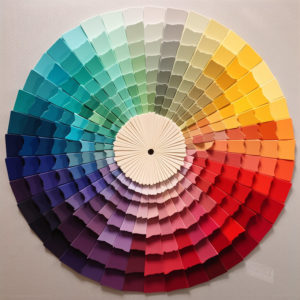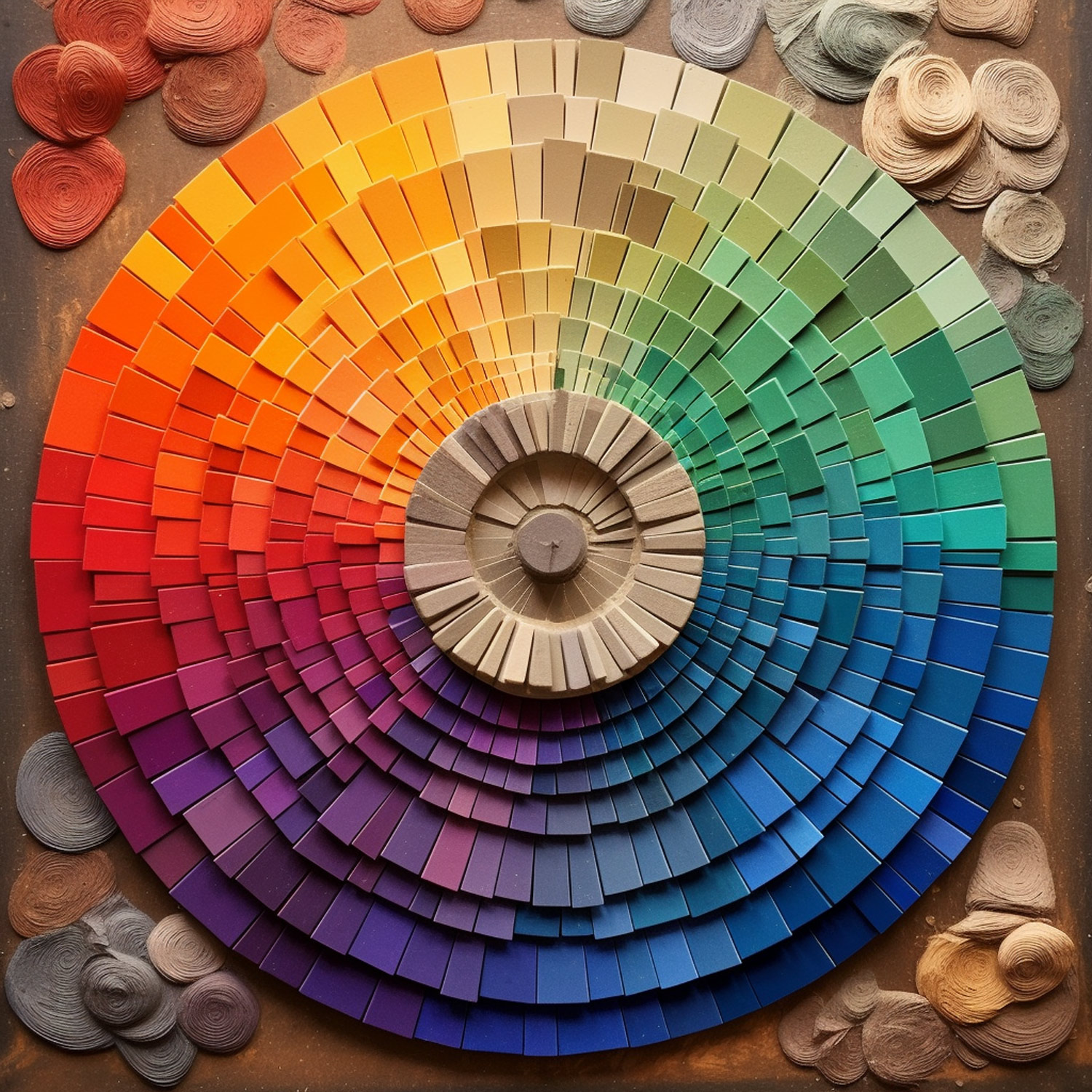When it comes to colour preferences, there is an astonishing range of opinions and emotions that are influenced by cultural, social, and personal factors. With over 7 billion people on the planet, identifying the world’s favourite colour is no small feat. However, we’ve delved into the subject to uncover the most beloved hue across different cultures and time periods. The result? Blue emerges as the most adored colour by people across the globe.
A Brief History of Colour

What is the World’s Favourite Colour?
The appreciation of colour has evolved throughout human history. In ancient times, colour was revered for its symbolic and spiritual significance. Egyptians, for example, associated blue with divinity and the afterlife, while the Chinese believed that red symbolised good fortune and happiness.
With the development of synthetic pigments and the mass production of coloured materials in the modern era, colour has become more accessible and affordable. As a result, colour preferences have diversified, and what was once a symbol of status or belief has now become an expression of individuality and personal taste.
What is the World’s Favourite Colour?
Blue is the worlds favourite colour. The dominance of blue as the world’s favourite colour can be attributed to several factors:
- Universality: Blue is a colour that occurs naturally in abundance. It is the hue of the sky and the sea, bringing a sense of calm, tranquillity, and stability to the human psyche. Its prevalence in the natural environment makes it easily recognisable and relatable across different cultures.
- Cultural Associations: Blue is often linked to positive qualities such as loyalty, trust, and wisdom. It is the colour of the Virgin Mary in Christian iconography, representing purity and faith. In many Eastern cultures, blue is believed to ward off evil spirits and bring protection.
- Versatility: Blue is a highly versatile colour, with a wide spectrum of shades and tones, from the palest sky blue to the deepest navy. This variety allows for endless combinations and expressions, making it a popular choice for everything from fashion to home décor.
- Gender Neutrality: While some colours are traditionally associated with a particular gender, blue is widely considered to be gender-neutral. It is a common choice for both boys and girls, making it a safe and universally appealing option.
While blue takes the crown as the world’s favourite colour, it’s essential to mention other popular hues as well:
- Green: Often linked to nature, growth, and renewal, green is another universally loved colour. Many cultures associate it with good fortune and prosperity.
- Red: A powerful and vibrant hue, red is the colour of passion, love, and excitement. It is widely used in ceremonies and celebrations across the globe.
- Purple: Historically linked to royalty and luxury, purple is admired for its elegance and sophistication. In recent years, it has gained popularity as a symbol of creativity and individuality.
Although blue emerges as the world’s favourite colour, it’s important to remember that colour preferences are highly personal and can vary from person to person. Embracing the vast spectrum of colours and their unique cultural and emotional associations only enriches our lives and understanding of the world around us. So, whether you’re a fan of serene blues, lively reds, or elegant purples, remember that each hue has a story to tell and a place in the colourful tapestry of human history.
The Psychology of Colour
Colour plays a significant role in our lives, influencing our emotions, perceptions, and even decision-making. From the most humble shades to our personal favourites, the colours we choose can reveal a lot about our personalities and preferences. In this article, we’ll delve into the psychology of colour, exploring the most humble colour, how to choose your favourite, and why we develop preferences for certain hues.
What is the Most Humble Colour?
- Defining Humility in Colour: A humble colour can be described as one that evokes feelings of modesty, simplicity, and understatement. It is a hue that doesn’t demand attention but rather blends into the background, providing a subtle and calming presence.
- Grey as the Humble Hue: Grey is often considered the most humble colour due to its neutrality and versatility. It is a balanced shade that lies between black and white, symbolising stability, practicality, and unpretentiousness. Grey’s ability to blend with other colours and provide a sense of calm and composure makes it a prime candidate for the most humble colour.
What is the most special colour?
The concept of a “most special colour” is subjective and depends on individual preferences, cultural backgrounds, and personal experiences. Colours can evoke different emotions and associations for different people, so it’s difficult to pinpoint a single colour as the most special.
It’s essential to note that preferences for colours can change over time and can be influenced by various factors such as culture, tradition, fashion, and personal tastes. However, some colours tend to be more popular or have specific associations in certain countries.
Here are some popular colours for the mentioned countries:
What is the most popular colour in England?
England: Red and navy blue are often associated with England due to their presence in the national flag (Union Jack). Red symbolises the English heritage and is also connected to the English national football team, while navy blue signifies the country’s history and tradition.
What is the most popular colour in the USA?
United States: Red, white, and blue are the colours of the American flag and are commonly associated with the United States. These colours represent patriotism, freedom, and the country’s national identity.
What is the most popular colour in Europe?
Europe: Europe is a diverse continent with various countries, cultures, and colour preferences. It is difficult to pinpoint a single colour as the most popular across the entire continent. However, in general, muted and earthy tones are quite common in European fashion and design.
What is the most popular colour in France?
France: Blue is often associated with France, particularly due to its presence in the French flag, which consists of blue, white, and red vertical stripes. The colour blue is often linked to French culture and heritage, and it is also the colour of the French national football team.
What is the most popular colour in China?
China: Red is a popular and significant colour in China, symbolising luck, happiness, and prosperity. The colour is deeply rooted in Chinese culture and traditions, often used in festivals, weddings, and various ceremonies. Red is also a prominent color in the Chinese national flag.
While these colors have particular associations in each country, it’s important to remember that color preferences can vary among individuals and can change over time due to factors such as trends and cultural shifts.
What is the most popular colour in India?
As for the most popular colour in India, it is difficult to identify one specific colour as the most popular. However, in general, bright and vibrant colours such as saffron, green, and blue are quite popular in India. These colours hold cultural and religious significance in the country. For instance, saffron is associated with spirituality and purity, green is related to life and happiness, and blue is linked to the Hindu deity Lord Krishna. The popularity of colours in India can vary by region, religion, and personal preferences, so it’s important to consider these factors when discussing colour preferences in the country.
How Do I Choose My Favourite Colour?
- Reflect on Personal Associations: One way to identify your favourite colour is to consider the feelings, memories, and associations that different hues evoke for you. For example, if the colour blue brings to mind happy childhood memories or feelings of tranquillity, it may be a strong contender for your favourite shade.
- Assess Your Emotional Response: Pay attention to your emotional reactions when encountering various colours. If a particular hue consistently brings you joy or a sense of calm, it may be your favourite colour.
- Consider Your Environment: Your favourite colour may be influenced by the colours that dominate your surroundings. Take note of the hues that recur in your wardrobe, home décor, and other personal spaces. This may provide clues to the colours that resonate most with you.
- Experiment and Observe: Don’t be afraid to explore different colours and observe how they make you feel. It may take time and experimentation to pinpoint your favourite hue, so embrace the process and enjoy the journey.
Why Do We Have a Favourite Colour?
- Personal Experiences: Our favourite colours are often linked to our personal experiences and memories. Hues that evoke positive emotions or are associated with significant life events may become our preferred shades.
- Cultural Influences: Our cultural backgrounds can play a significant role in shaping our colour preferences. Certain colours may hold symbolic or emotional significance in specific cultures, influencing our affinity for those hues.
- Personality Traits: Research has suggested that our favourite colours may reflect our personality traits. For example, individuals who are drawn to blue may be more introverted and introspective, while those who prefer red might be outgoing and assertive.
- Aesthetic Appeal: Our innate sense of aesthetics can also contribute to our colour preferences. We may be naturally drawn to certain hues due to their visual appeal or the emotions they evoke.
The colours we gravitate towards can reveal much about our personalities, experiences, and emotions. From the humble grey to our individual favourites, understanding the psychology of colour can provide valuable insights into our personal preferences and the world around us. Embrace the colourful tapestry of life, and don’t be afraid to explore the hues that resonate most with you.

Hi! I’m Chris, the founder of The Organic & Natural Paint Co, and I’m focused on the education and promotion of natural non toxic alternatives to chemical laden everyday products that we just take for granted. We have a choice, and I want to raise awareness of alternative products that don’t actually harm us!
This company is my way of pushing the awareness of better indoor air quality, something that I am personally passionate about due to my own children’s breathing medical conditions. I just couldn’t paint with big brand standard petrochemical paint any longer and wanted another solution.
Read more: About me
Twitter: NaturalPaintCo
Instagram: thenaturalpaintco


